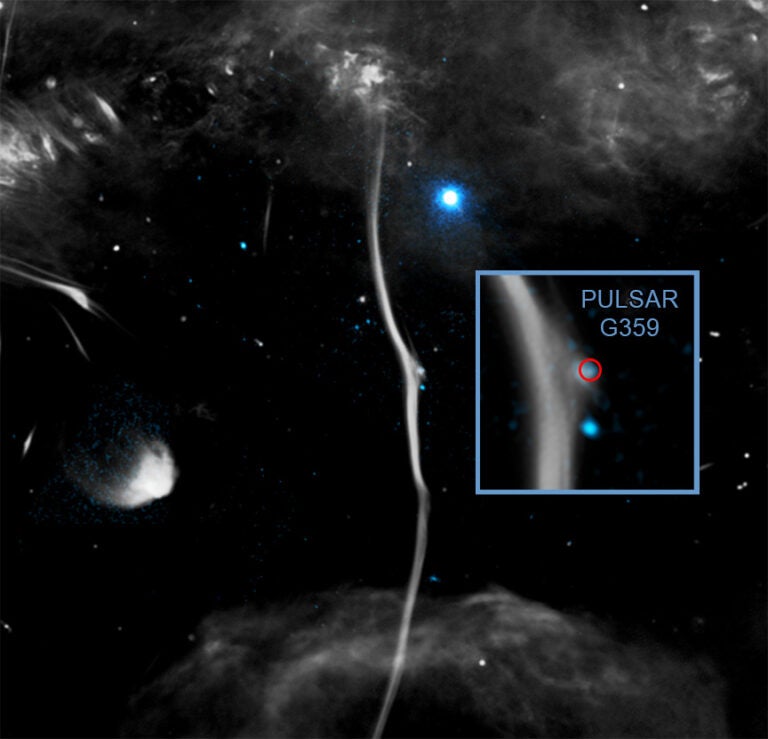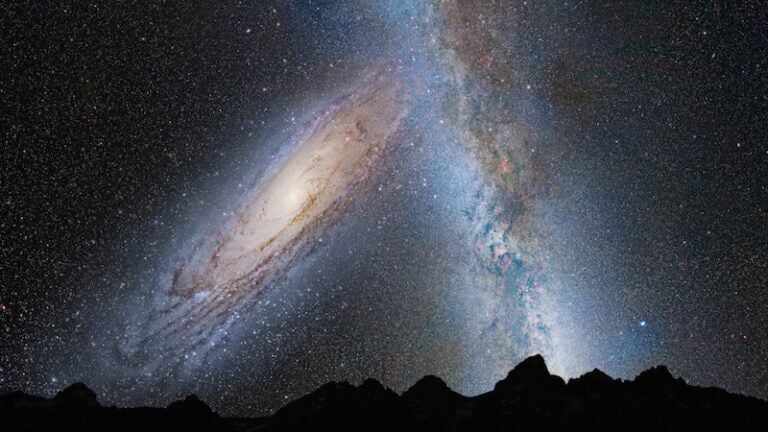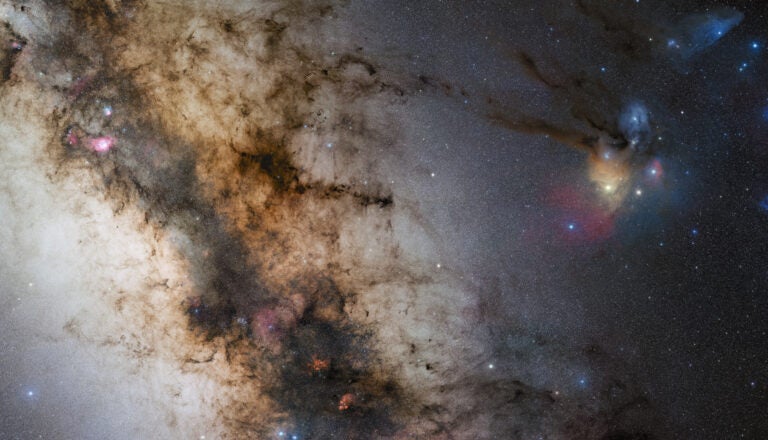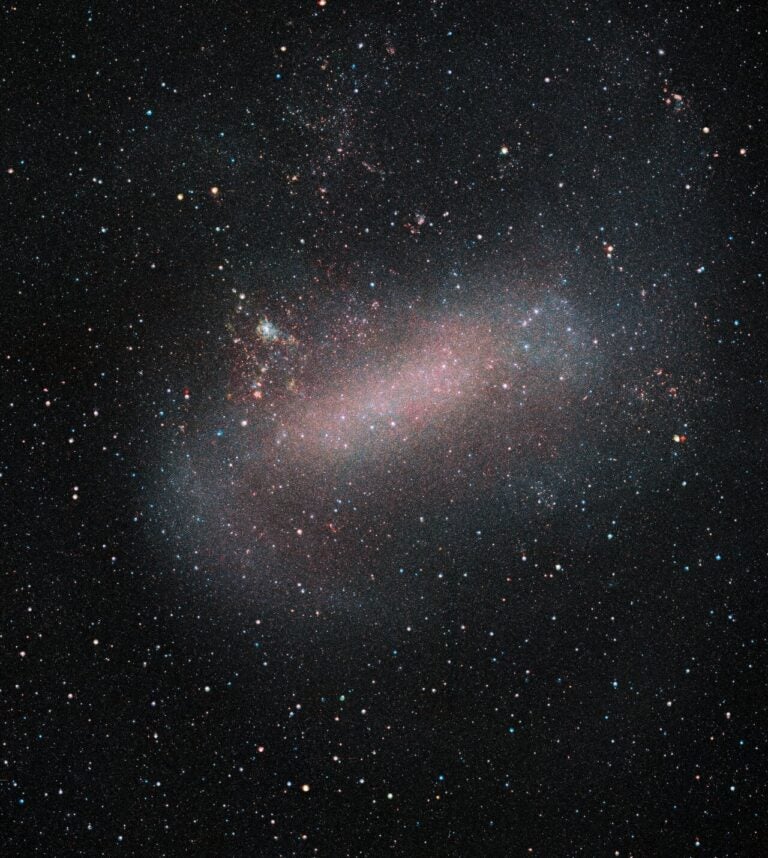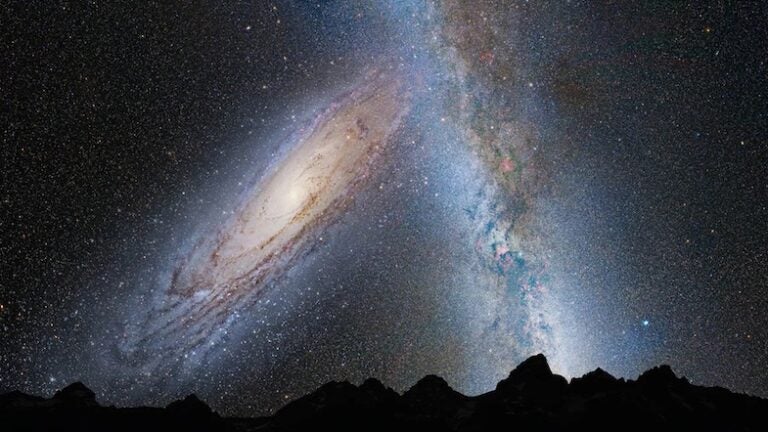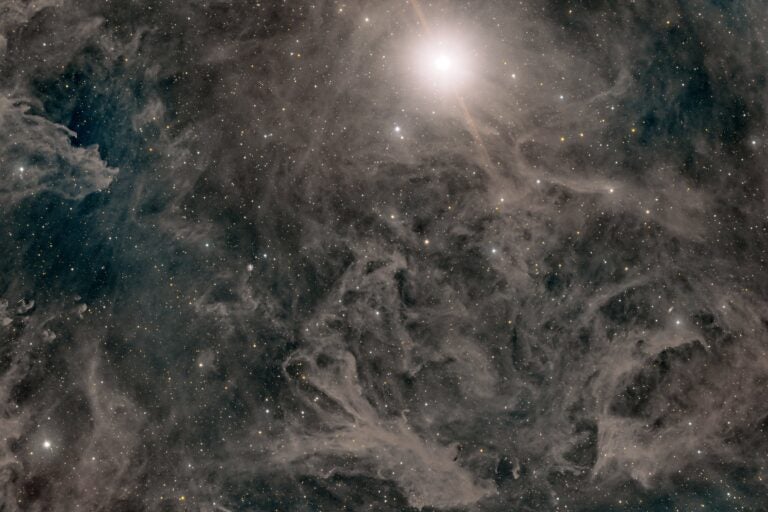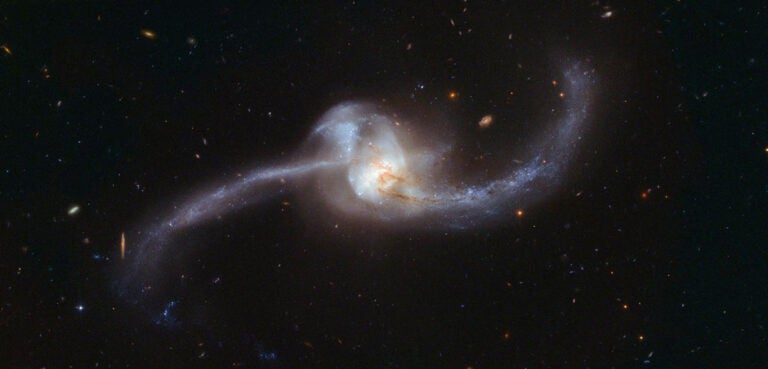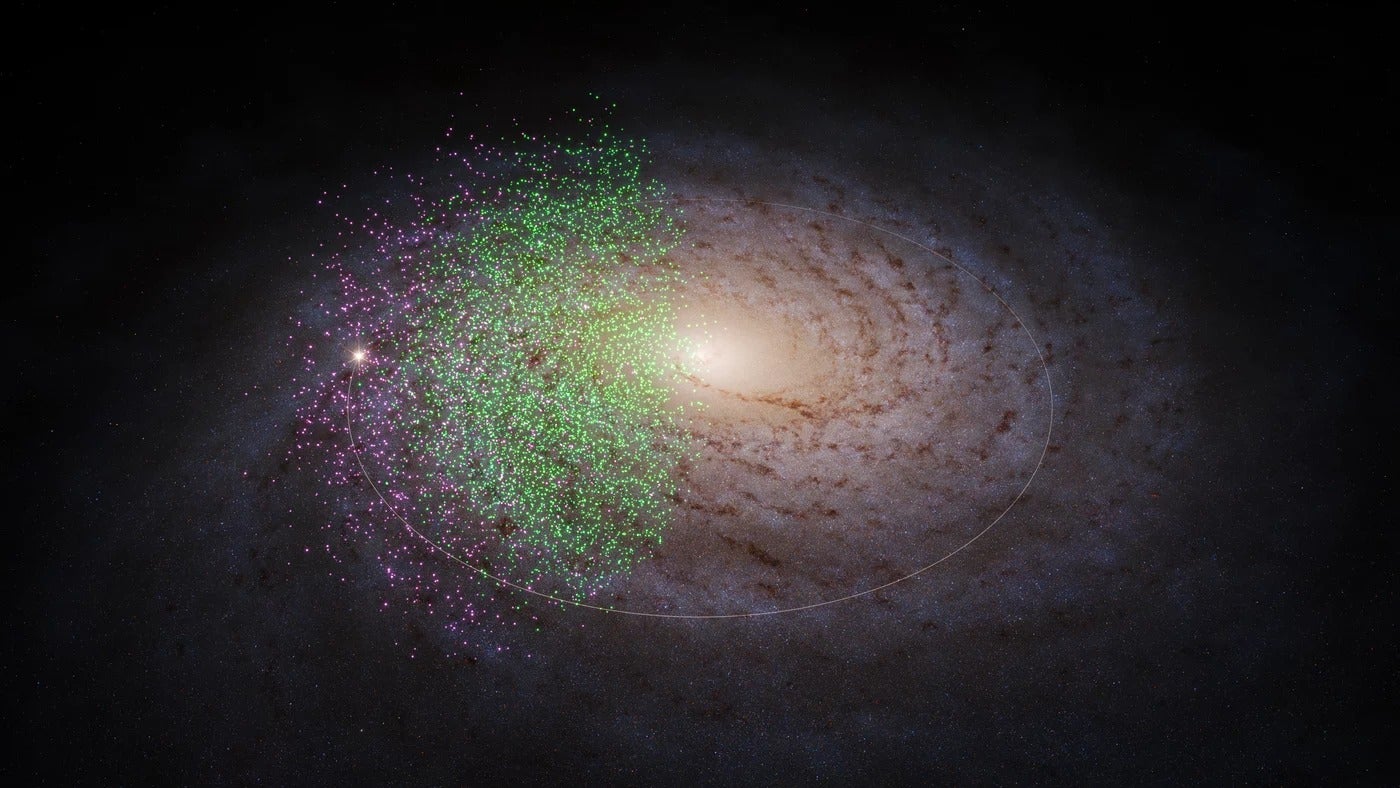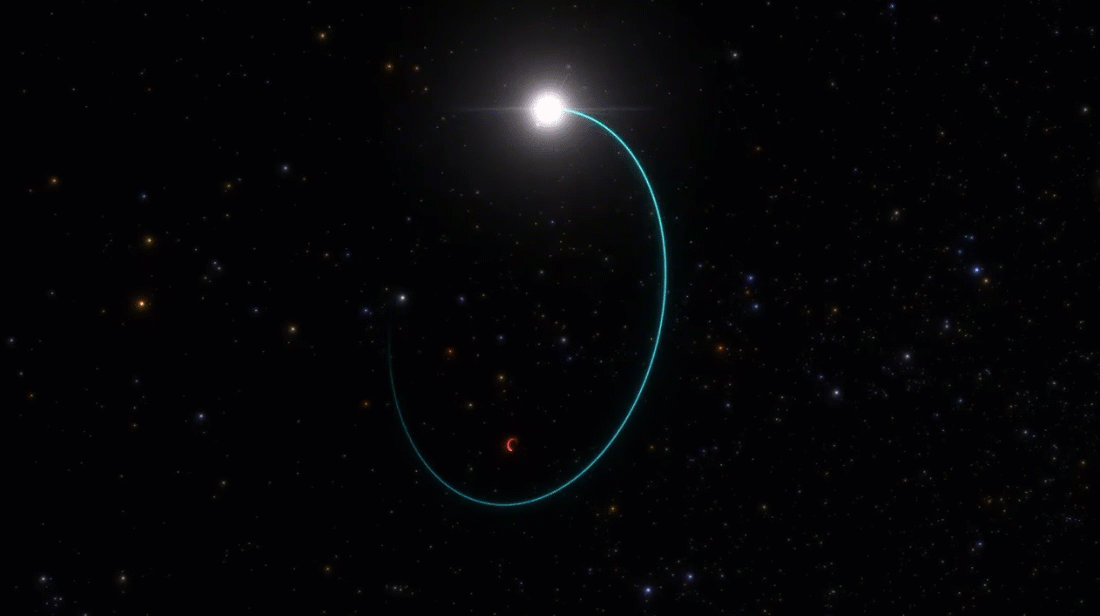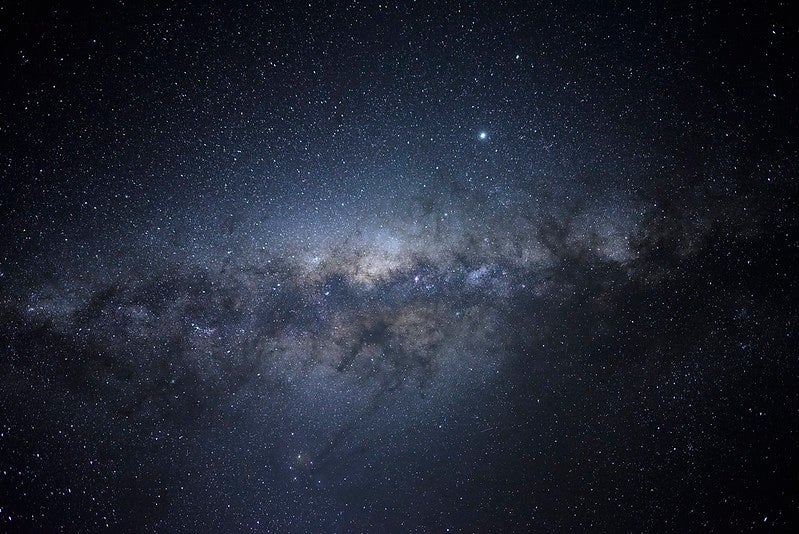
Be careful out there, astronomers: There could be a dark galaxy in our midst.
In research published today in Science Advances, researchers from the Chinese National Academy of Sciences discovered that a fast-moving cloud of gas near the Milky Way may not be a cloud at all, but rather a small galaxy made mostly of dark matter.
A dark galaxy
AC G185.0-11.5 is part of the larger AC-I Complex, which is what astronomers call a high-velocity cloud (HVC). These are clumps of hydrogen moving up to several hundred mph faster than gas in the Milky Way’s plane. HVCs are believed to be material falling onto the galaxy from outside it, perhaps from other galaxies torn apart by our own or even the ejecta spewed out by supernovae within our own galaxy, blasted to vast distances and now finally settling back down.
But as the authors examined AC-I using data from the now-collapsed Arecibo Observatory in Puerto Rico and the Five-hundred-meter Aperture Spherical radio Telescope (FAST) in Guizhou, China, they discovered a clump within it, called AC G185.0-11.5, that showed properties more in line with a rotating disk galaxy — but one without any visible stars.
Galaxies where there are few stars are called dark galaxies, and astronomers believe they are so dark because there’s very little material inside them to form stars. Instead, these objects are dominated by dark matter, which only weakly interacts with normal matter, also called baryonic matter. (Baryonic matter makes up just 15 percent of the matter in the universe, while dark matter makes up the other 85 percent.)
“We didn’t see any star formation from the available optical data, thus it is always dark,” says study co-author Ming Zhu, an astrophysicist at the Chinese National Academy of Sciences. In fact, Zhu says that AC G185.0-11.5 appears to contain 21 times more dark matter than normal matter.
Not a cloud
But how did the researchers determine that AC G185.0-11.5 is a galaxy at all?
The giveaway came from the detection of rotation in a clump of material within AC-I. The way the clump was moving, Zhu says, “reveals that the gas is rotating [in] a disk-like structure.” Further, Zhu adds, “there should be dark matter inside to control the rotation.”
The team calculates that AC G185.0-11.5 contains about 300 million Suns’ worth of mass, although there is a high degree of uncertainty.
Based on the galaxy’s mass and rotation, the researchers were also able to calculate its distance as around 900,000 light-years, although because the mass is so uncertain, this distance also holds a lot of uncertainty as well. But given that it’s notoriously hard to measure distances to HVCs, that’s a vast improvement over previous knowledge.
AC G185.0-11.5 is large enough to study with space- and ground-based telescopes. Zhu says observatories like JWST could be used to detect whether there are any stars shining within it, while the Very Large Array could help better image the disk of the galaxy as it rotates and possibly discern what’s at the center.
Deciphering dark matter
The results should be taken with a grain of salt. To date, some candidate dark galaxies haven’t panned out — they’ve been found to be ordinary gas clouds with some internal tidal interactions. And there are still several uncertainties in the measurements.
But if AC G185.0-11.5 is confirmed to be a dark galaxy, its proximity to the Milky Way could make it a perfect laboratory to better study the role of dark matter in galaxies, whether or not they are dominated by it. All galaxies contain dark matter, which does interact with baryonic matter through gravity. Astronomers have known since the 1960s that dark matter’s gravity influences the way galaxies rotate by comparing how they’re expected to spin based on their visible matter to how they actually move, the latter of which indicates there’s more matter than can be seen.
So, studying a galaxy that’s mostly dark matter could more clearly reveal the behavior and nature of this mysterious substance, better informing the search for it in our own galaxy and beyond.

